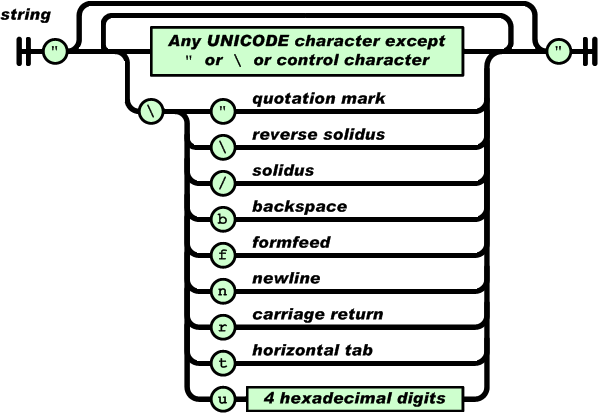Written by Magnus Holm.
From Wikipedia’s article on JSON
JSON was based on a subset of the JavaScript scripting language.
All JSON-formatted text is also syntactically legal JavaScript code.
JSON is a subset of JavaScript.
All these years we’ve heard it over and over again: “JSON is a JavaScript subset”. Guess what? They’re wrong. Wrong, wrong, wrong. You see, the devil’s in the details, and there’s no way to avoid it: Not all JSON-formatted text is legal JavaScript code:
{"JSON":"ro
cks!"}
Copy the exact code above and paste it into Firebug or the Web Inspector within a pair of parentheses (required to avoid an ambiguity in JavaScript’s syntax):

Wait, what? SyntaxError: Unexpected token ILLEGAL? That doesn’t make any sense! It’s just a regular object literal, how can that be a SyntaxError?
Try the same code in a proper JSON parser. No problems at all.
Of course it’s not just a regular object literal. There’s a sneaky little Unicode character in there too: Right between “ro” and “cks!” there’s a tiny U+2028. Your browser probably doesn’t display it because it’s whitespace: LINE SEPARATOR, but it’s still there. If you replace the character with a U+2029 (PARAGRAPH SEPARATOR) you would have the exact same issue.
JSON + U+2028 = ☺
According to the JSON specification, you can safely use this character in any string. It’s not a quote, not a backslash, and not a control character. It’s just a weird Unicode whitespace character:

JavaScript + U+2028 = ☹
ECMA-262 (the standard that JavaScript is based on) on the other hand defines strings a little differently: According to 7.8.4 String Literals, a string can contain anything as long as it’s not a quote, a backslash or a line terminator:
DoubleStringCharacter ::
SourceCharacter but not double-quote " or backslash \ or LineTerminator
\ EscapeSequence
SingleStringCharacter ::
SourceCharacter but not single-quote ' or backslash \ or LineTerminator
\ EscapeSequenceAnd what is a line terminator? Let’s have a look at 7.3 Line Terminators:
The following characters are consider to be line terminators:
\u000A- Line Feed\u000D- Carriage Return\u2028- Line separator\u2029- Paragraph separator
Ouch.
No string in JavaScript can contain a literal U+2028 or a U+2029.
So what?
Because of these two invisible Unicode characters, JSON is not a subset of JavaScript. Close, but no cigar.
In most applications, you won’t notice this issue. First of all, the line separator and the paragraph separator isn’t exactly widely used. Secondly, any proper JSON parser will have no problems with parsing it.
However, when you’re dealing with JSONP there’s no way around: You’re forced to use the JavaScript parser in the browser. And if you’re sending data that other have entered, a tiny U+2028 or U+2029 might sneak in and break your pretty cross-domain API.
The solution
Luckily, the solution is simple: If we look at the JSON specification we see that the only place where a U+2028 or U+2029 can occur is in a string. Therefore we can simply replace every U+2028 with \u2028 (the escape sequence) and U+2029 with \u2029 whenever we need to send out some JSONP.
It’s already been fixed in Rack::JSONP and I encourage all frameworks or libraries that send out JSONP to do the same. It’s a one-line patch in most languages and the result is still 100% valid JSON.







 本文揭示了JSON与JavaScript之间的细微差别,特别指出了一种隐藏的Unicode字符如何导致JSON不能被视为JavaScript的子集。文章通过具体代码示例解释了这种差异,并提出了在发送JSONP数据时避免问题的解决方案。
本文揭示了JSON与JavaScript之间的细微差别,特别指出了一种隐藏的Unicode字符如何导致JSON不能被视为JavaScript的子集。文章通过具体代码示例解释了这种差异,并提出了在发送JSONP数据时避免问题的解决方案。


















 被折叠的 条评论
为什么被折叠?
被折叠的 条评论
为什么被折叠?








